 1999 Peugeot 406 (Phase II, 1999) Dimensions, Size & Specs
1999 Peugeot 406 (Phase II, 1999) Dimensions, Size & SpecsMeasurements of the 1999 Peugeot 406, engineered for optimal performance and comfort
| Dimensions | |
|---|---|
| Length: | 4600 mm181.1 in15.1 ft |
| Width: | 1765 mm69.5 in5.8 ft |
| Height: | 1396-1415 mm55.0-55.7 in4.6-4.6 ft |
| Trunk Capacity: | 430 liter15.2 cu ft |
| Weight Specifications | |
| Curb Weight: | 1315-1455 kg2899-3208 lbs |
| Maximal permitted Weight: | 1815-1995 kg4001-4398 lbs |
| Tire Specifications | |
| Rims Sizes: |
|
| Tire Sizes: |
|
The Peugeot 406 Phase II, produced from 1999 to 2004, is a mid-size sedan that blends elegant French design with practical dimensions suitable for everyday driving. Measuring 4600 mm (181.1 inches) in length and 1765 mm (69.5 inches) in width, the 406 offers a spacious yet manageable footprint for maneuvering in urban and suburban environments. Its height varies between 1396 mm (55.0 inches) and 1415 mm (55.7 inches), depending on specific versions or equipment, contributing to an aerodynamic profile while ensuring passenger comfort.
In terms of weight, the Peugeot 406 Phase II has a curb weight ranging from 1315 kg (2,900 lbs) to 1455 kg (3,209 lbs), while the maximum permissible weight lies between 1815 kg (4,001 lbs) and 1995 kg (4,398 lbs). This weight range reflects different engine options and trim levels offered throughout its production period. The vehicle rides on rim sizes of either 15 or 16 inches, paired with tire sizes such as 195/65 R15, 205/55 R16, or 205/60 R15, which balance ride comfort and handling agility.
The trunk provides a generous luggage capacity of 430 liters (15.2 cubic feet), making it practical for family trips or daily errands. Overall, the Peugeot 406 Phase II sedan stands out as a well-proportioned car in its segment, offering versatility with a blend of size, weight, and storage that meets the needs of drivers who appreciate a mid-size sedan with a touch of sophistication. This generation marked a continuation of Peugeot's reputation for producing cars with refined design cues and reliable performance.
Discover the standout features that make the 1999 Peugeot 406 a leader in its class
Have a question? Please check our knowledgebase first.
The Peugeot 406 Phase II, produced from 1999 to 2004, has a length of 4600 mm (181.1 inches) and a width of 1765 mm (69.5 inches). These dimensions position the 406 as a mid-size sedan, providing a balance between interior space and ease of handling. Its length allows comfortable seating for passengers and adequate legroom, while the width ensures good cabin spaciousness without making the vehicle overly bulky for urban parking or tight spaces. Overall, the 406's size supports relatively straightforward maneuverability in city environments and parking lots, though drivers should remain mindful of its length in tighter spots compared to smaller compact cars.
The height of the Peugeot 406 Phase II ranges from 1396 mm to 1415 mm (approximately 55.0 to 55.7 inches), depending on factors such as trim level and suspension setup. This modest variation might be influenced by ride height adjustments or different tire and rim sizes, like 15- or 16-inch wheels, which slightly affect the overall height. The height supports a sleek and aerodynamic profile typical of sedans in its class while still offering sufficient headroom for occupants. This range also contributes to the car's stability and road presence without sacrificing comfort.
The curb weight of the Peugeot 406 Phase II ranges between 1315 kg and 1455 kg (approximately 2,899 to 3,208 pounds), depending on equipment levels, engine choices, and optional features. The lighter models offer slightly better fuel efficiency and more agile handling, while the heavier trims may feel more stable and comfortable on rough roads due to increased mass and potential additional equipment. This weight range is fairly standard for mid-size sedans of its era. Engine tuning and transmission pairing can also interact with the vehicle’s weight to influence acceleration, braking distance, and overall driving dynamics.
The Peugeot 406 Phase II with a length of 4600 mm (181.1 inches) and width of 1765 mm (69.5 inches) generally fits into a standard single-car garage without issue. Typical single-car garages measure about 3,000 mm (10 feet) wide and up to 6,000 mm (20 feet) deep, so the 406’s dimensions allow for sufficient clearance around the vehicle for door opening and easy movement. However, owners should ensure their garage entry width and height can accommodate the vehicle’s scope, including mirrors and any roof accessories. The car’s relatively moderate height (up to 1415 mm or 55.7 inches) is well within standard garage height clearances.
The Peugeot 406 Phase II offers a luggage capacity of 430 liters (approximately 15.2 cubic feet), which is competitive among mid-size sedans produced around the late 1990s and early 2000s. This capacity allows the sedan to comfortably accommodate suitcases, groceries, and other cargo for daily use or longer trips. When compared to similar models like the Ford Mondeo, Volkswagen Passat, or Opel Vectra of its era, the 406’s trunk space stands on par, offering practical utility without compromising passenger space. The ample trunk space complements the sedan’s overall versatility for families and professionals alike.
The maximum weight capacity of the Peugeot 406 Phase II varies between 1815 kg and 1995 kg (around 4,000 to 4,399 pounds), depending on specific versions and equipment. This weight includes the vehicle's curb weight plus passengers, cargo, and any additional accessories. For safe operation, load limits must be observed to maintain handling, braking efficiency, and suspension performance. Generally, the 406 can comfortably carry up to five passengers and their luggage while staying within its maximum weight rating. Exceeding these limits could compromise safety and vehicle longevity, so adherence to manufacturer guidelines is essential.
The Peugeot 406 Phase II offered rim sizes of 15 and 16 inches, with tire sizes including 195/65 R15, 205/55 R16, and 205/60 R15. Larger rims and lower-profile tires, such as 16-inch rims with 205/55 tires, tend to enhance road handling and the sporty feel of the car by providing better grip and sharper response. Conversely, 15-inch rims with higher-profile tires often deliver more comfortable rides by better absorbing road irregularities. The choice of rim and tire size affects overall ride height minimally but can influence the car’s stance, cornering characteristics, and even fuel efficiency to a degree.
The Peugeot 406 Phase II, launched in 1999, is a refined update to the original 406 (1995-1999). In terms of dimensions, both generations share similar length and width measurements, with the Phase II maintaining the 4600 mm length and roughly 1765 mm width. However, Phase II introduced a sleeker, more aerodynamic silhouette with subtle design updates in the headlights, grille, and bumpers, giving it a fresher and more modern appearance. Interior features and build quality were improved for enhanced comfort and technology integration. Overall, while dimensions remained stable, the Phase II focused on styling refinement and better equipment rather than dramatic changes in size.
When compared to contemporaries like the Ford Mondeo and Volkswagen Passat of the late 1990s and early 2000s, the Peugeot 406 Phase II aligns closely in size and practicality. With its 4600 mm length and 1765 mm width, it offers dimensions typical of mid-size sedans, providing adequate passenger comfort and trunk capacity. The luggage capacity of 430 liters is competitive, generally matching or slightly exceeding the cargo space offered by its rivals. Maneuverability and curb weight are similarly balanced, making the 406 an appealing alternative for buyers seeking European styling and driving dynamics alongside practical everyday usability.
The Peugeot 406 Phase II is primarily a mid-size sedan, known for its balanced blend of comfort, style, and practicality. With its four-door sedan body style, it caters to families, professionals, and commuters who prioritize ample passenger space and a comfortable ride. Its refined European design, combined with a reasonable footprint (4600 mm long and 1765 mm wide), makes it suitable for both urban driving and longer highway journeys. The 406 is an excellent choice for those who want a car with classic sedan proportions, reasonable luggage space, and a reputation for driving comfort without venturing into larger, bulkier vehicle categories.
Discover similar sized cars.
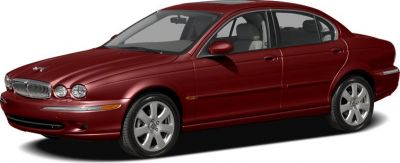
| Production: | 2001-2009 |
|---|---|
| Model Year: | 2001 |
| Length: | 4672 mm183.9 in |
| Width: | 1789 mm70.4 in |
| Height: | 1430 mm56.3 in |

| Production: | 2023-2025 |
|---|---|
| Model Year: | 2024 |
| Length: | 4646 mm182.9 in |
| Width: | 1816 mm71.5 in |
| Height: | 1445 mm56.9 in |

| Production: | 2019-2023 |
|---|---|
| Model Year: | 2020 |
| Length: | 4641 mm182.7 in |
| Width: | 1816 mm71.5 in |
| Height: | 1448 mm57.0 in |
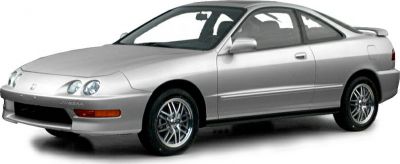
| Production: | 1994-2001 |
|---|---|
| Model Year: | 1994 |
| Length: | 4525 mm178.1 in |
| Width: | 1710 mm67.3 in |
| Height: | 1370 mm53.9 in |
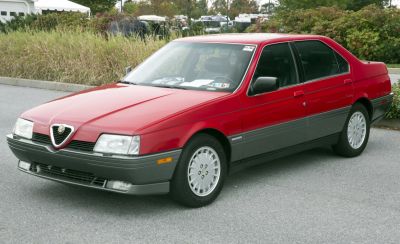
| Production: | 1987-1998 |
|---|---|
| Model Year: | 1987 |
| Length: | 4550-4670 mm179.1-183.9 in |
| Width: | 1760 mm69.3 in |
| Height: | 1356-1400 mm53.4-55.1 in |
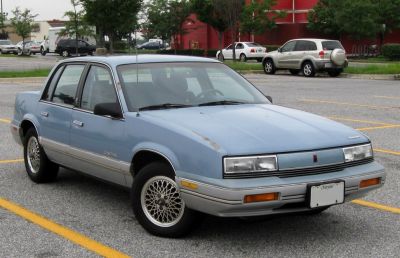
| Production: | 1984-1995 |
|---|---|
| Model Year: | 1984 |
| Length: | 4555 mm179.3 in |
| Width: | 1700 mm66.9 in |
| Height: | 1330 mm52.4 in |

| Production: | 2015-2018 |
|---|---|
| Model Year: | 2015 |
| Length: | 4632 mm182.4 in |
| Width: | 1811 mm71.3 in |
| Height: | 1428 mm56.2 in |
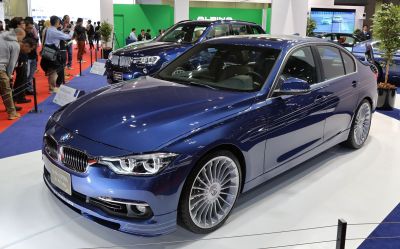
| Production: | 2015-2018 |
|---|---|
| Model Year: | 2015 |
| Length: | 4632 mm182.4 in |
| Width: | 1811 mm71.3 in |
| Height: | 1431 mm56.3 in |
